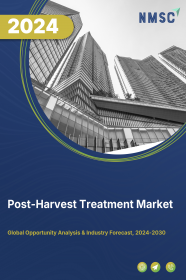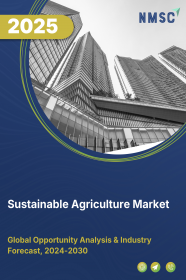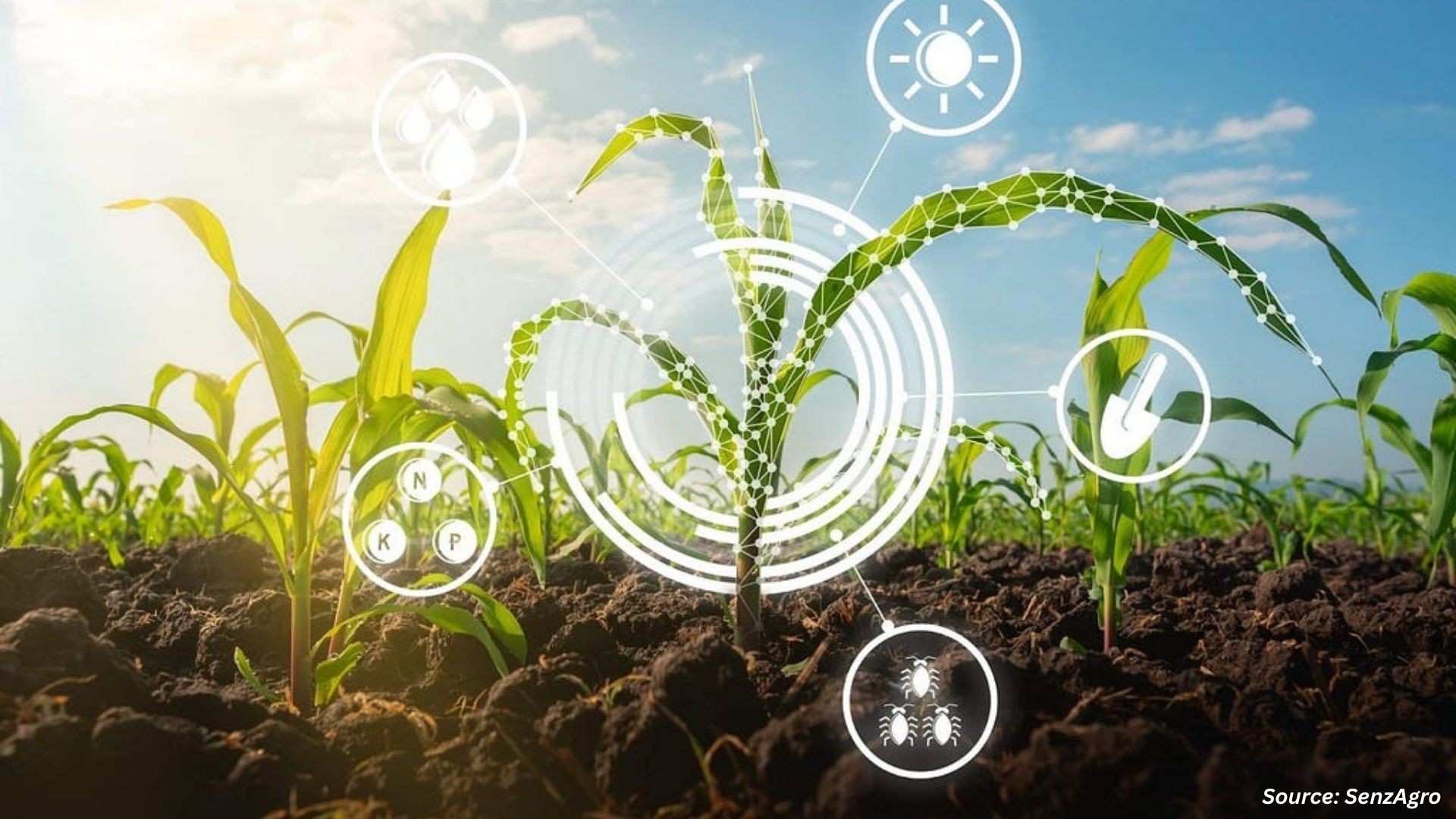
Post-Harvest Treatment Market by Product Type (Coatings, Cleaners, Sanitizers, Fungicides, Sprout Inhibitors, Ethylene Blockers, and Others), and by Crop Type (Fruits and Vegetables) – Global Opportunity Analysis and Industry Forecast 2024-2030
Post-Harvest Treatment Market Overview
The global Post-Harvest Treatment Market size was valued at USD 1.83 billion in 2023 and is predicted to reach USD 2.92 billion by 2030 with a CAGR of 6.9% from 2024-2030. Post-harvest treatment also known as crop preservation market signifies to the methods and procedures used to preserve and boost the quality of agronomic harvests after they have been harvested. These methods aim to extend self-life, reduce spoilage, and maintain product freshness, ultimately ensuring food quality and reducing post-harvest losses. Crop preservation is necessary for ensuring food security and reducing waste in the agricultural supply chain. It plays a crucial role in supplying fresh and safe food to consumers while supporting farmers and distributors in managing their produce effectively
Market Dynamics and Trends
The rising stringent regulations and standards by authorities governing food safety and quality propel the post-harvest chemical treatment market forward by necessitating measures to uphold the integrity and safety of agricultural products. These regulations aim to minimize contamination, mitigate microbial growth, and preserve the overall quality of harvested produce.
For Instance, in March 2023, UPL Ltd., a global provider of sustainable agricultural solutions partnered with governments of Zambia, Sierra Leone, Liberia, and The Gambia, along with the Commonwealth Secretariat, to launch a 'food security' program. The program focuses on enhancing food production, storage, and supply chains, aiming at strengthening food production, storage, and supply chains globally.
Moreover, the rise in global trade of food items due to increasing globalization boosts the demand for post-harvest treatment techniques. It is crucial to maintain the quality and safety of consumable goods while they are being shipped and stored to meet international rules and satisfy customer demands.
Additionally, with a larger volume of goods crossing borders, the risk of contamination or spoilage increases, highlighting the importance of effective post-harvest treatments to safeguard food integrity and minimize losses, which in turn fuels the growth of the crop preservation market.
However, in rural areas, where agriculture dominates, the market trend faces a notable constraint due to inadequate infrastructure compared to urban centres. Insufficient roads, electricity, and storage facilities hinder the efficient movement and storage of agricultural produce, thereby limiting market accessibility.
On the other hand, introduction of organic and sustainable agricultural products, prioritizing environmental impact and quality of food products creates future opportunities for the growth of the crop preservation market. This trend incentivizes the development of post-harvest treatments personalized to organic farming practices, fostering innovation in natural and non-chemical solutions.
Market Segmentation and Scope of Study
The post-harvest treatment market share is segmented on the basis of product type, crop type, and region. On the basis of treatment type, the market is divided into coatings, cleaners, sanitizers, fungicides, sprout inhibitors, ethylene blockers and others. On the basis of crop type, the market is bifurcated into fruits and vegetables. Regional breakdown and analysis of each of the aforesaid segments includes regions comprising of North America, Europe, Asia-Pacific, and Rest of The World (RoW).
Geographical Analysis
Asia Pacific holds the dominating share of the post-harvest treatment market during the forecasted period, due to growing crop production within the countries such as China, India, and Japan. According to a report published by Organisation for Economic Cooperation and Development (OECD), global crop production is forecasted to increase by 18%, with China leading as the largest contributor at approximately 30%, followed by India at around 17%. This increase in crop production projects the importance of post harvesting techniques to keep the food supply going and meet the demands of the people, thereby fueling the market growth.
Moreover, the growing government investments in agriculture further propel the growth of the market by providing support and resources for the development and adoption of advanced post-harvest treatment technologies and practices. This includes funding research and development initiatives which enhance the efficiency and effectiveness of post-harvest processes. For instance, the Government of India experienced significant growth, reaching USD 10.4 million in the fiscal year 2023-24, thereby propelling the crop preservation market growth.
On the other hand, North America is showing a steady rise in the post-harvest treatment market due to the region's strong commitment in promoting sustainable agricultural practices. For instance, in May 2023, the USDA and Colorado Department of Natural Resources partnered to support the region’s agricultural producers and landowners through the Conservation Reserve Enhancement Program (CREP). This project delivers producers with a choice for dryland crop making on suitable cropland and allows producers to continue farming while retiring water rights and conserving the Ogallala Aquifer. This initiative addresses water conservation and land stewardship while supporting agricultural communities and hence promoting the post-harvest treatment use.
Moreover, North America's market growth is driven by the rising enforcement of standardized regulations for food products, which ensure their safety and quality post-harvest, is driving the market's growth. This strong focus on making safe food products made post-harvest treatments preferable, thereby propel the market growth.
For instance, in 2022, the FDA's implemented Food Safety Modernization Act (FSMA) in North America, which have a profound impact on the crop preservation methods in the region. It includes food certification, advanced technologies, training and education, consulting services, and adjustments in the global supply chain in order ensure compliance with the new food safety regulations. This collective effort across the industry to meet FSMA standards shared have contributed in boosting the market in the region.
Competitive Landscape
Various market players operating in the post-harvest treatment industry are UPL Limited, MustGrow Biologics Corporation, JBT Corporation, Hazel Technologies, Inc., Xeda International, AgroFresh Solutions, Inc., Syngenta Group, Valent Biosciences Corporation, Citrosol International, and Futureco Bioscience LLC and others. These market players are adopting numerous strategies such as business collaboration, and partnership to maintain their dominance in the market.
For Instance, in September 2023, MustGrow Biologics Corp. and Janssen PMP, a division of Johnson & Johnson, are expanding their partnership to include the preservation initiative of postharvest potatoes and bananas worldwide. This collaboration aims to address issues faced by potato and banana industry and reduce postharvest losses in fruit and vegetable crops, enhancing the agriculture produced treatment market.
Moreover, in April 2023, AgroFresh Solutions partnered with sensor technology startup Strella to enhance post-harvest freshness solutions. Strella's sensors provided real-time perishability data on stored apples and pears, enabling data-driven inventory decisions to maintain freshness and product value and partnered with AgroFresh's post-harvest solutions.
Key Benefits
-
The report provides quantitative analysis and estimations of the post-harvest treatment market from 2024 to 2030, which assists in identifying the prevailing industry opportunities.
-
The study comprises a deep-dive analysis of the current and future post-harvest treatment market trends to depict prevalent investment pockets in the industry.
-
Information related to key drivers, restraints, and opportunities and their impact on the post-harvest treatment market is provided in the report.
-
Competitive analysis of the key players, along with their market share is provided in the report.
-
SWOT analysis and Porters Five Forces model is elaborated on the study.
-
Value chain analysis in the post-harvest treatment market study provides a clear picture of roles of stakeholders.
Post-Harvest Treatment Market Key Segments
By Product Type
-
Coatings
-
Cleaners
-
Sanitizers
-
Fungicides
-
Sprout Inhibitors
-
Ethylene Blockers
-
Others
By Crop Type
-
Fruits
-
Vegetables
By Region
-
North America
-
The U.S.
-
Canada
-
Mexico
-
-
Europe
-
The U.K.
-
Germany
-
France
-
Italy
-
Spain
-
Denmark
-
Netherlands
-
Finland
-
Sweden
-
Norway
-
Russia
-
Rest of Europe
-
-
Asia-Pacific
-
China
-
Japan
-
India
-
South Korea
-
Australia
-
Indonesia
-
Singapore
-
Taiwan
-
Thailand
-
Rest of Asia-Pacific
-
-
Rest of The World (RoW)
-
Latin America
-
Middle East
-
Africa
-
REPORT SCOPE AND SEGMENTATION:
|
Parameters |
Details |
|
Market Size in 2023 |
USD 1.83 Billion |
|
Revenue Forecast in 2030 |
USD 2.92 Billion |
|
Growth Rate |
CAGR of 6.9% from 2023 to 2030 |
|
Analysis Period |
2023–2030 |
|
Base Year Considered |
2023 |
|
Forecast Period |
2024–2030 |
|
Market Size Estimation |
Billion (USD) |
|
Growth Factors |
|
|
Countries Covered |
28 |
|
Companies Profiled |
10 |
|
Market Share |
Available for 10 companies |
|
Customization Scope |
Free customization (equivalent to up to 80 working hours of analysts) after purchase. Addition or alteration to country, regional, and segment scope. |
|
Pricing and Purchase Options |
Avail customized purchase options to meet your exact research needs. |
KEY PLAYERS
-
UPL Limited
-
MustGrow Biologics Corporation
-
JBT Corporation
-
Hazel Technologies, Inc.
-
Xeda International
-
AgroFresh Solutions, Inc.
-
Syngenta Group
-
Valent Biosciences Corporation
-
Citrosol International
-
Futureco Bioscience LLC




















 Speak to Our Analyst
Speak to Our Analyst





















